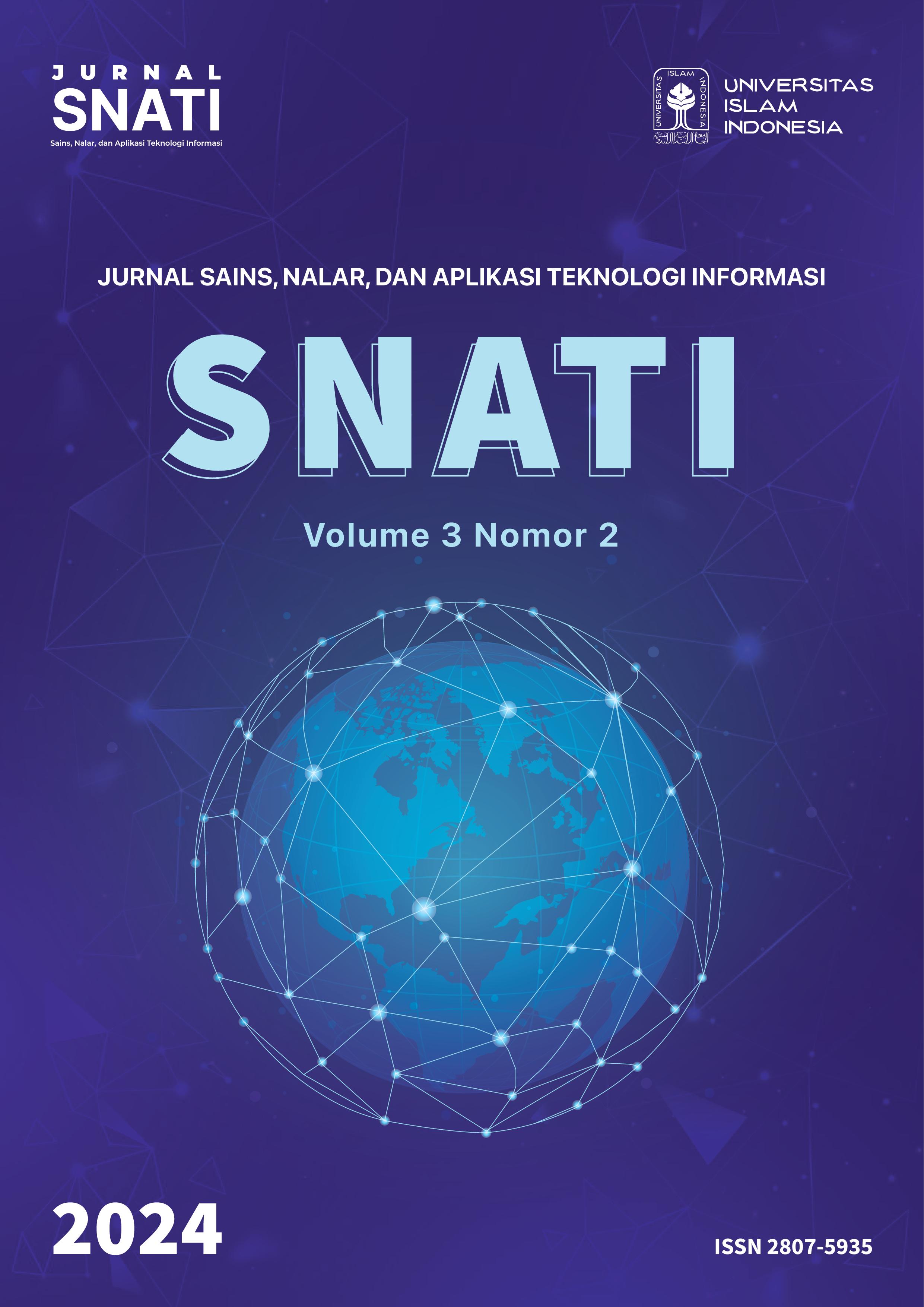Main Article Content
Abstract
A portable water ionizer has been successfully developed as an innovative solution to provide healthy and high-quality water conveniently while traveling. The device utilizes six 18650 lithium-ion batteries connected in series with a maximum voltage of 25.2 Volt DC and a current capacity of 1500 mAh as the main power source for the water electrolysis process. Additionally, two 8.4 Volt DC batteries are used to power the microcontroller and sensors. The total power required for the entire device is approximately 13.274 Watt, allowing the device to operate for approximately 3 hours. Portability testing was conducted through a questionnaire involving the participation of 22 respondents. The majority of respondents, 15 out of 22, stated that the device is easy to carry while traveling and demonstrates good portability. This can be attributed to its compact dimensions (17 cm x 13 cm x 37 cm) and relatively light weight (1.5 kg in dry condition and 2.5 kg in water-filled condition). Another advantage of the device is its ability to operate without a connection to household electricity, making it a practical and portable option for users to carry while traveling. The positive results of the portability testing confirm that the portable water ionizer successfully meets the desired portability standards. With its easy-to-carry design, the device can be an efficient and convenient solution for individuals who travel frequently and prioritize the quality of the water they consume.
Keywords
Article Details
Copyright (c) 2024 Uke Kurniawan Usman, Antonio Abhinyano Mitto

This work is licensed under a Creative Commons Attribution-ShareAlike 4.0 International License.
References
- M. Rodiana, E. Kurniawan, dan P. Pangaribuan, “WATER IONIZER PENGHASIL AIR HIDROGEN, AIR ALKALI DAN AIR ASAM UNTUK MENINGKATKAN KESEHATAN MASYARAKAT,” Prosiding Seminar Nasional Program Pengabdian Masyarakat, Jan 2022, doi: 10.18196/ppm.43.631.
- “Divider Board for Arduino Development, Shenzhen Global Technology .” 2010.
- DFrobot, “Gravity: Analog TDS Sensor/ Meter for Arduino.” Diakses: 1 Agustus 2023. [Daring]. Tersedia pada: https://www.dfrobot.com/product-1662.html
- “Pembuatan Water Level Sebagai Pengendali Water Pump Otomatis Berbasis Transistor”.
- Richard Blocher, Dasar Elektronika, 2 ed. Yogyakarta: Andi, 2003.
- A. Budiyanto, G. B. Pramudita, dan S. Adinandra, “Kontrol Relay dan Kecepatan Kipas Angin Direct Current (DC) dengan Sensor Suhu LM35 Berbasis Internet of Things (IoT),” Techné : Jurnal Ilmiah Elektroteknika, vol. 19, no. 01, hlm. 43–54, Apr 2020, doi: 10.31358/techne.v19i01.224.
- T. Rayna dan L. Striukova, “From rapid prototyping to home fabrication: How 3D printing is changing business model innovation,” Technol Forecast Soc Change, vol. 102, hlm. 214–224, Jan 2016, doi: 10.1016/j.techfore.2015.07.023.
- “Arduino pH-meter using PH-4502C.” Diakses: 1 Agustus 2023. [Daring]. Tersedia pada: https://cimpleo.com/blog/simple-arduino-ph-meter/
- “Elektronika Dasar Mengenai Kegunaan Resistor Dan Transistor”.
- Q. Zhou dan J. Zhang, “Internet of Things and Geography - Review and Prospect,” 2011 International Conference on Multimedia and Signal Processing, hlm. 47–51, Mei 2011, doi: 10.1109/CMSP.2011.101.
- F. A. Perdana, “Baterai Lithium,” INKUIRI: Jurnal Pendidikan IPA, vol. 9, no. 2, hlm. 113, Apr 2021, doi: 10.20961/inkuiri.v9i2.50082.
- S. Samsugi dan D. Elvis Silaban, “Purwarupa Controlling Box Pembersih Wortel Dengan Mikrokontroler,” hlm. 166–172, 2018, [Daring]. Tersedia pada: http://journal.sttnas.ac.id/
References
M. Rodiana, E. Kurniawan, dan P. Pangaribuan, “WATER IONIZER PENGHASIL AIR HIDROGEN, AIR ALKALI DAN AIR ASAM UNTUK MENINGKATKAN KESEHATAN MASYARAKAT,” Prosiding Seminar Nasional Program Pengabdian Masyarakat, Jan 2022, doi: 10.18196/ppm.43.631.
“Divider Board for Arduino Development, Shenzhen Global Technology .” 2010.
DFrobot, “Gravity: Analog TDS Sensor/ Meter for Arduino.” Diakses: 1 Agustus 2023. [Daring]. Tersedia pada: https://www.dfrobot.com/product-1662.html
“Pembuatan Water Level Sebagai Pengendali Water Pump Otomatis Berbasis Transistor”.
Richard Blocher, Dasar Elektronika, 2 ed. Yogyakarta: Andi, 2003.
A. Budiyanto, G. B. Pramudita, dan S. Adinandra, “Kontrol Relay dan Kecepatan Kipas Angin Direct Current (DC) dengan Sensor Suhu LM35 Berbasis Internet of Things (IoT),” Techné : Jurnal Ilmiah Elektroteknika, vol. 19, no. 01, hlm. 43–54, Apr 2020, doi: 10.31358/techne.v19i01.224.
T. Rayna dan L. Striukova, “From rapid prototyping to home fabrication: How 3D printing is changing business model innovation,” Technol Forecast Soc Change, vol. 102, hlm. 214–224, Jan 2016, doi: 10.1016/j.techfore.2015.07.023.
“Arduino pH-meter using PH-4502C.” Diakses: 1 Agustus 2023. [Daring]. Tersedia pada: https://cimpleo.com/blog/simple-arduino-ph-meter/
“Elektronika Dasar Mengenai Kegunaan Resistor Dan Transistor”.
Q. Zhou dan J. Zhang, “Internet of Things and Geography - Review and Prospect,” 2011 International Conference on Multimedia and Signal Processing, hlm. 47–51, Mei 2011, doi: 10.1109/CMSP.2011.101.
F. A. Perdana, “Baterai Lithium,” INKUIRI: Jurnal Pendidikan IPA, vol. 9, no. 2, hlm. 113, Apr 2021, doi: 10.20961/inkuiri.v9i2.50082.
S. Samsugi dan D. Elvis Silaban, “Purwarupa Controlling Box Pembersih Wortel Dengan Mikrokontroler,” hlm. 166–172, 2018, [Daring]. Tersedia pada: http://journal.sttnas.ac.id/
